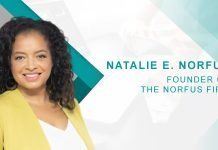Can you please share a few words about yourself and your journey as EVP and Chief Strategy Officer at isolved.
I’ve been fortunate to have spent my entire career in business software, from my first startup in 1988, which provided payroll solutions to SMBs to joining isolved early in 2020. I’ve spent over 30 years in C-level and executive roles at Episerver (now Optimizely), Verint, KANA Software, and Epicor Software, amongst others as well as advising private equity firms and their portfolio companies. I also sit on the board of directors at a number of software companies including Sugar CRM.
What attracted you to move into the HR technology and talent management space?
HR was often the last department to benefit from the digital investment. The pandemic uncovered, for the first time, the very real need to invest in employees and employee experience at the same rate companies invest in customers. I saw the opportunity to help shape the software and services that HR needed to keep their seat at the table and make a real difference in people’s lives. Since then, the stories from customers and partners of how these changes have impacted them is humbling. isolved has many nonprofit customers, for example, and when they are able to hire and keep the best people, the whole community wins.
Please tell us about your role as a strategy and marketing executive in both CX and EX technology companies.
My role in both customer experience and employee experience technology companies has many parallels – building demand for the company’s offerings and helping shape a market and product strategy that aligns with customer needs. I’ve led and lead high-growth marketing and product organizations with responsibility for go-to-market and product strategy, demand generation, brand awareness, and advocacy. Regardless of the type of organization, we must anticipate customer needs and deliver the software and solutions that work for them today and tomorrow – and do it in a way that is differentiated from competitors.
Customer experience and employee experience have often run in parallel. What’s your take on their similarities and differences?
Ultimately good customer experience starts with the good employee experience. Customers will not get the service they deserve or the products that exceed their expectations without employees who are motivated and productive. When companies invest in EX, they are investing in CX. In fact, 91 percent of companies say employee experience is a priority for them this year. There are similarities in that both good CX and EX is based on removing friction. For employees that could mean simply removing friction from accessing a work schedule or a paystub. For customers that could mean removing friction from buying a product online and picking it up in-store. For both, it’s about getting answers quickly and achieving goals (whatever that looks like) seamlessly. The differences between CX and EX are the way organizations view them. For example, a company could consider employee experience a cost center and customer experience a revenue driver. This is a mistake as people are a company’s greatest asset and can deliver the customer experience that drives customer value and ultimately company revenue.
What should HR leaders consider when they work with their CX-focused peers?
Common goals. Whenever a team works cross-functionally, understanding common goals is an impactful way to start an initiative. For example, is there a way to show that a company’s Net-Promoter Score (NPS) improved when investments were made into the EX? Is there a way to show that a company’s employee retention improved when the company invested in an aspect of EX (e.g., engagement tools, corporate social responsibility programs, better benefits)? Then, by proxy, if employee retention improved and the company was able to keep experienced, tenured employees, did customer satisfaction (C-SAT) increase? Whatever the goal, peers should work together to identify goals and the best performance indicators to prove the results.
How can the two initiatives work together more?
First, it’s to realize that no one team and no one person owns customer experience nor employee experience. Everyone is in customer experience. Everyone is in employee experience. When everyone is accountable for the experiences that customers and employees receive, everyone wins.
What does the data tell us? How can we be sure EX impacts CX and vice versa?
There are several relationship-driven data points that can prove the impact of EX on CX and CX on EX. Some of which were described above. isolved, for example, has an industry-leading NPS of 52, our annual regrettable turnover rate is 11 percent and our annual voluntary turnover rate is 19 percent. Anything under 20% turnover for high-growth tech companies like ours is very strong. It’s safe to make the parallel that happy employees make for happy customers.
If we’re having this conversation in five years, what do you hope EX and CX programs are like?
Universally adopted, agile, and aligned. My hope that is in five years – if not sooner – leaders recognize that they must invest equally in CX and EX. That they must be agile to both customer and employee needs and wants. That they must align CX and EX initiatives across the company, with ownership by everyone. For technology, my hope is that companies embrace the use of artificial intelligence (AI) to personalize and simplify the experience that both customers and employees get, to deliver better analysis and recommendations to leaders to make better, more informed decisions, and to finally close the gap between all groups for equal opportunity.
What advice would you give budding entrepreneurs and leaders aspiring to target the workforce management niche?
Work hard, stay humble and good things will happen. It really comes down to that and staying focused on people.
How do you envision scaling isolved in 2023 and beyond?
Scaling isolved is in step with helping our People Heroes (our customers, partners, and their employees) grow. We’ve invested heavily in our People Heroes advocacy program, People Heroes Community, and People Heroes University. Intelligently connected, these initiatives support the personal and professional growth of our customers and partners. As they grow, we grow. For these reasons, we are even hitting the road on a cross-country tour to meet our customers where they are. We have over 50 customer roadshows planned to help enable and empower People Heroes to do their best work.

James Norwood EVP and Chief Strategy Officer at isolved.
James is also on the board of directors at Sugar CRM. He brings more than 30 years of experience in enterprise software with a proven track record in product strategy and development, sales and marketing, M&A, and brand creation and differentiation. During his career, James has held numerous C-level and executive leadership roles at a number of ERP, CRM, martech, and customer experience (CX) companies.













